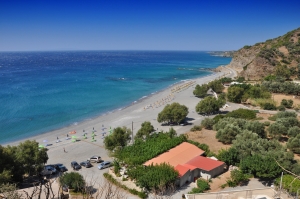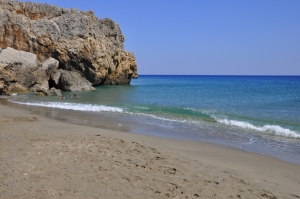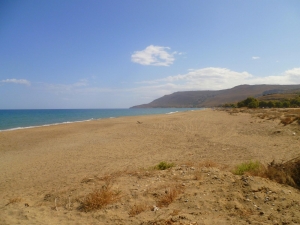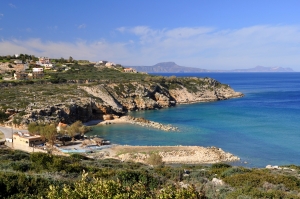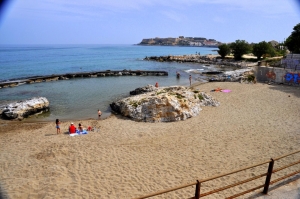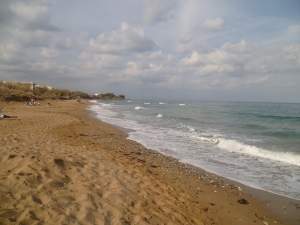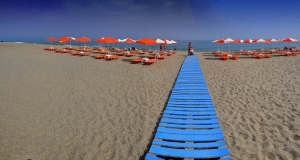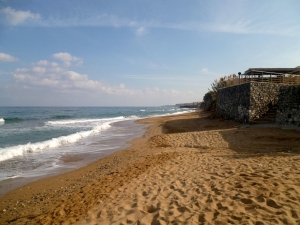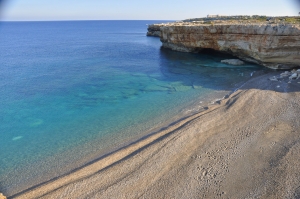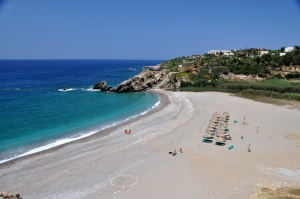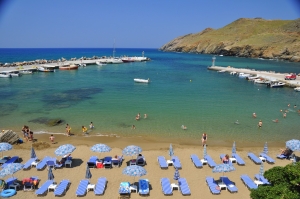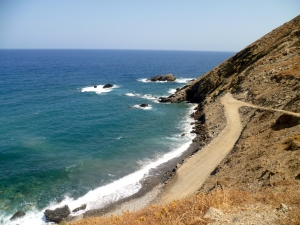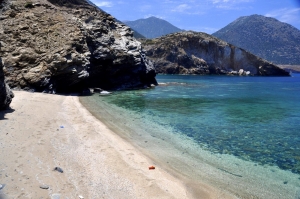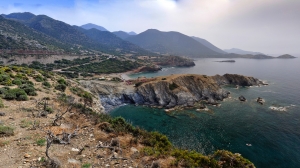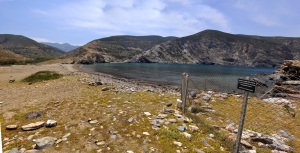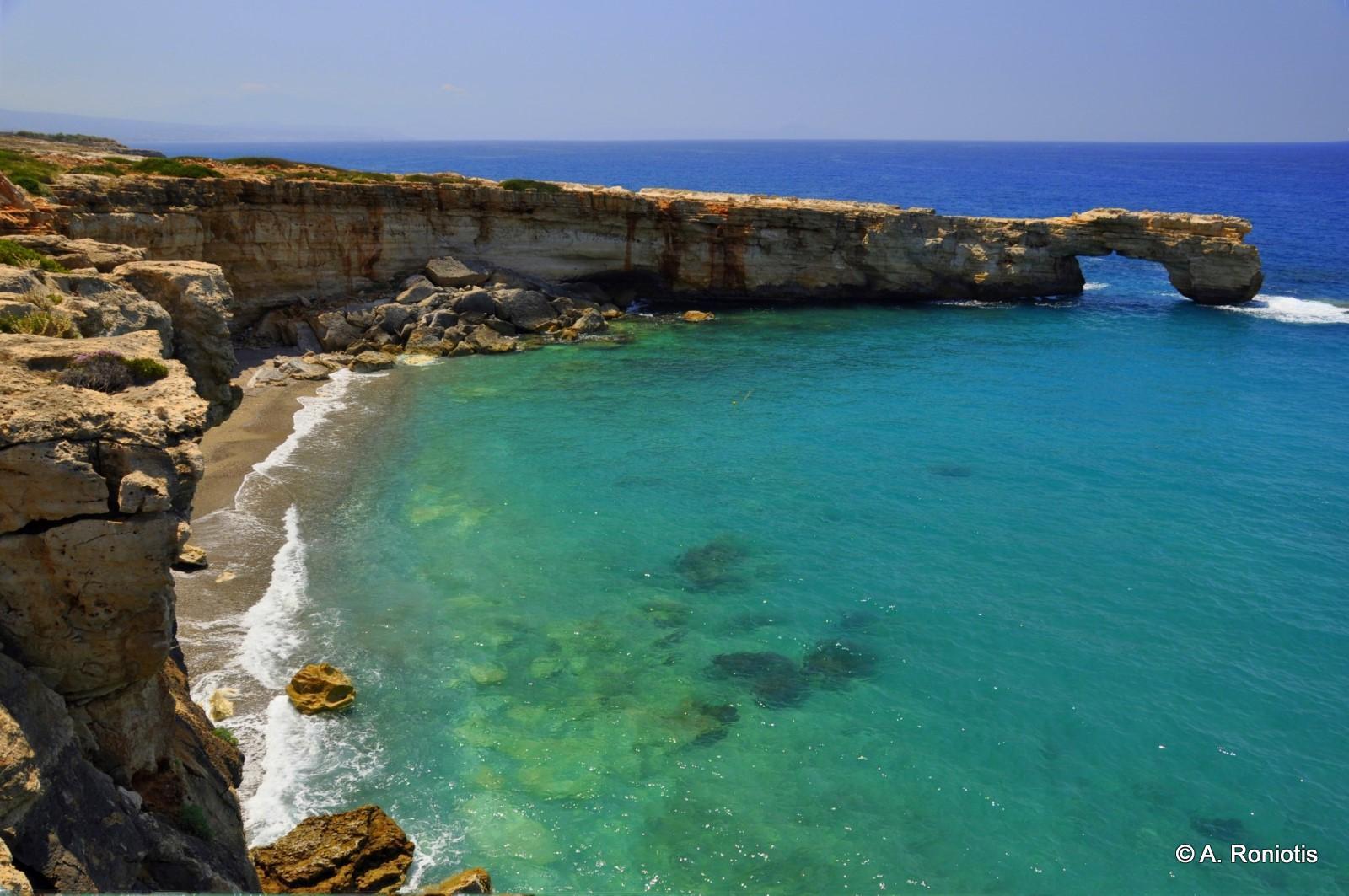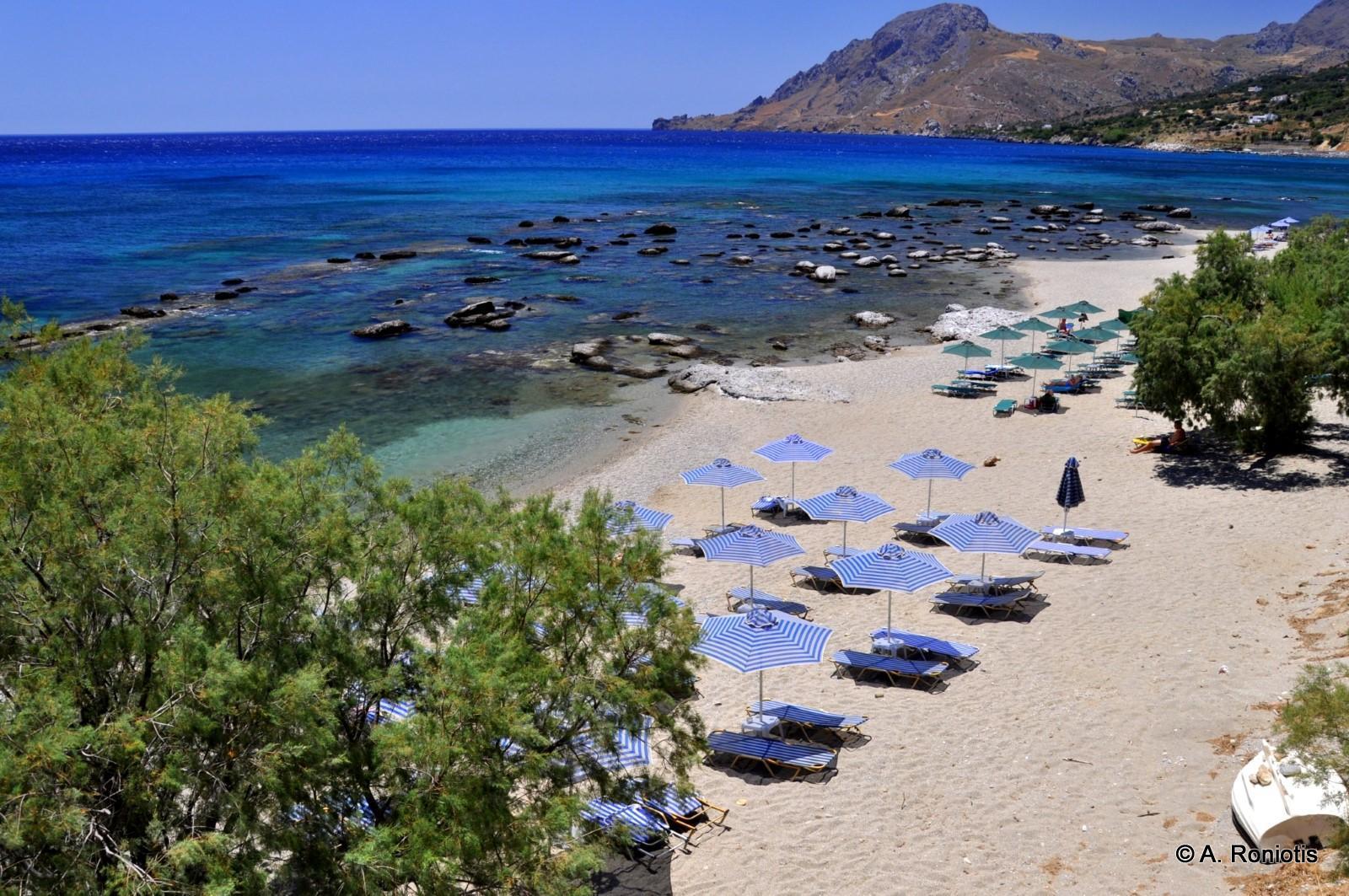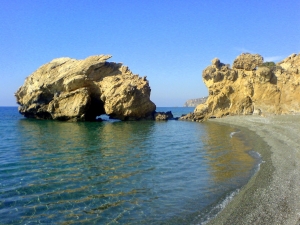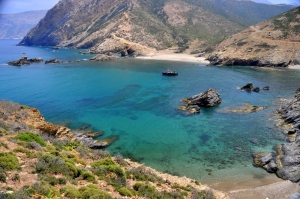At the exit of the river that runs in the canyon of Rodakino, 2km south of the village, there are many beautiful and tranquil beaches. To visit them you should take the road that leads to Korakas. Despite the fact that it has a great beachfront, Rodakino is not highly developed and still retains its traditional character and harmony.
The beach is actually divided into two large beaches and is secluded, since access is not as easy as the nearby beaches of Korakas and Polirizos. On the beach there are no facilities, just a small tavern (and another one on the west part of the beach).
The beach Episkopi is located 45km east of Chania and 14km west of Rethymnon, in a fertile valley with lowlands. It takes its name from the nearby village, Episkopi, located 2km southern. Almost no-one Greek knows this place, but everybody knows the family Vardinoyannis, originating from here. This is one of the richest families in Greece.
The beach of Kamari is located about 7km west of Rethymnon, near the village Gerani, at the exit of Vederi Gorge. The highway connecting Chania and Rethymnon runs along the shore and above the bridge of Gerani, next to the beach.
Koumbes is located 2km west of the center of Rethymnon and is actually the only beach in the west part of the city. It has wonderful views to the imposing fortress of Fortezza, which is located a few hundred meters on the east. It is named after the Turkish word Kubbe that means “dome”.
The sandy beach of Rethymno is located just 1km east of the city centre, next to the Venetian port. It's a lovely beach with golden sand and crystal clear shallow waters, very well organized and close to all amenities of the city.
In front of the suburbs of Rethymnon stretches a long sandy beach, which is an extension of vast beachfront that starts near the harbor of Rethymno and extends to the east for 13km. It is very well organized, with a plethora of choices for food, drink and accommodation.
Adelianos Kampos (or Kambos) is located 6km east of Rethymnon, near the village of Adele, on a flat plain. The name means “Plain of Adele”. It is actually a seaside suburb of Rethymnon, as the small village has grown so much in the last century, that it is now a part of the city.
Skaleta beachfront starts 11km east of Rethymno and stretches 3km to the east. It is the last part of the vast beach of the Gulf of Rethymno. The first beach after Pighianos Kampos is Sfakaki, a very well organised resort.
Spilies beach or “Tou Maliou to Riaki” (i.e. Malios’ stream) is located 15km east of Rethymnon city, in a fairly secluded area, just a few kilometers east of Skaleta and west of Geropotamos. It is quite unknown to most locals, though it is very close to the main road that connects Heraklion and Rethymno.
Geropotamos is located about 18km east of Rethymnon and 3km west of Panormo. It is named after the homonym river that empties in the east end of the beach. The small beach is sandy and has crystal clear water, which is very cool because of the river, which has water all year round and forms a small deep lake near the shore.
Panormo is situated about 20km east of Rethymno, in the region of Milopotamos. It is a tranquil resort, which has met a fast development in recent years, without however losing its traditional face. The wild beauty of the pure Cretan landscapes, the picturesque village, the beautiful beaches, and easy access, have contributed to this development.
he beaches of Skepasti are located about 27km east of Rethymnon and 2km east of the homonym village Skepasti, in the province of Milopotamos. The beaches are mainly accessed through bad dirt tracks that starts from the village. Skepasti beaches are all open to the north winds, with pebbles and deep water.
Charakas is a area located about 36km east of Rethymno and 44km west of Heraklion, close to Bali. Half a kilometer east of the Church of Panagia Charakiani, a small peninsula is formed on the side of which there are the small beaches of Glaros and Katevati. The highway connecting Heraklion and Rethymno passes nearby.
Kalo Horafi is located approximately 37km east of Rethymno and 43km west of Heraklion, at the former position of 318 Agii Pateres (318 Holy Fathers) monastery. The monastery does not survive today, but there is a newer chapel commemorating that. “Kalo Horafi” is the name of the wider area, characterized by the wild Cretan landscape with high mountains and green gorges.
The secluded bay of Pera Galini is located 48km east of Rethymno and 39km west of Heraklion, near the village Sises. The name “Pera Galini” is known to all Cretans because of the local disposal center, which accepts the garbage of the city of Heraklion. Almost nobody knows that there is a beach nearby, however severely degraded by pollution.
A few meters west of Geropotamos beach and where the territory of the village Prinos begins, we find the amazing natural arch of Kamarola and next to it a stunning beach with sand, fine pebbles and crystal clear deep blue waters.
In addition to the main beach of Plakias with its shallow sand, west of the village as far as the fishing shelter of Plakias, there is also Skinos beach.
In front of the village lies a quiet beach with coarse gray sand and beautiful crystal clear waters. The village is not well developed and still retains the unique Cretan authenticity. You will find only 2-3 taverns and very few rooms. The beach has no umbrellas, but there are some tamarisk trees in front on the settlement offering natural shade.
The secluded gulf of Korakia is located 48km east of Rethymno and 39km west of Heraklion, near the village Sises and close to Fodele beach. There are three adjacent beaches, which are mainly sandy and large pebbles, open to northwest winds. The beaches are very secluded and almost unknown to everybody. Korakia is totally unorganized, thus you should have anything you need with you.










